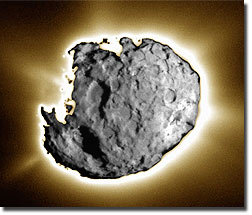The Greek traveler, Pausanias, living in the second century, CE, would probably recognize the spectacular site of the Sanctuary of Zeus at Mt. Lykaion, and particularly the altar of Zeus. At 4,500 feet above sea level, atop the altar provides a breathtaking, panoramic vista of Arcadia.
"On the highest point of the mountain is a mound of earth, forming an altar of Zeus Lykaios, and from it most of the Peloponnesos can be seen," wrote Pausanias, in his famous, well-respected multi-volume Description of Greece. "Before the altar on the east stand two pillars, on which there were of old gilded eagles. On this altar they sacrifice in secret to Lykaion Zeus. I was reluctant to pry into the details of the sacrifice; let them be as they are and were from the beginning."

|
| ©Unknown
|


Comment: Unfortunately the worst case scenario is where we are heading and this gadget gives the psychopaths in power a way to make sure that soldiers endowed with conscience won't get in the way of their murderous rampage.
Coincidence that it is being developed by Israel?